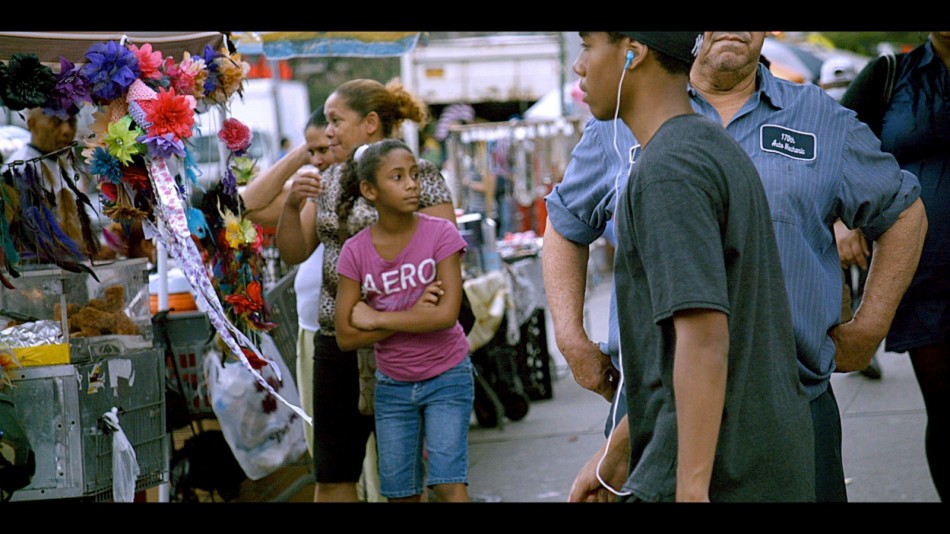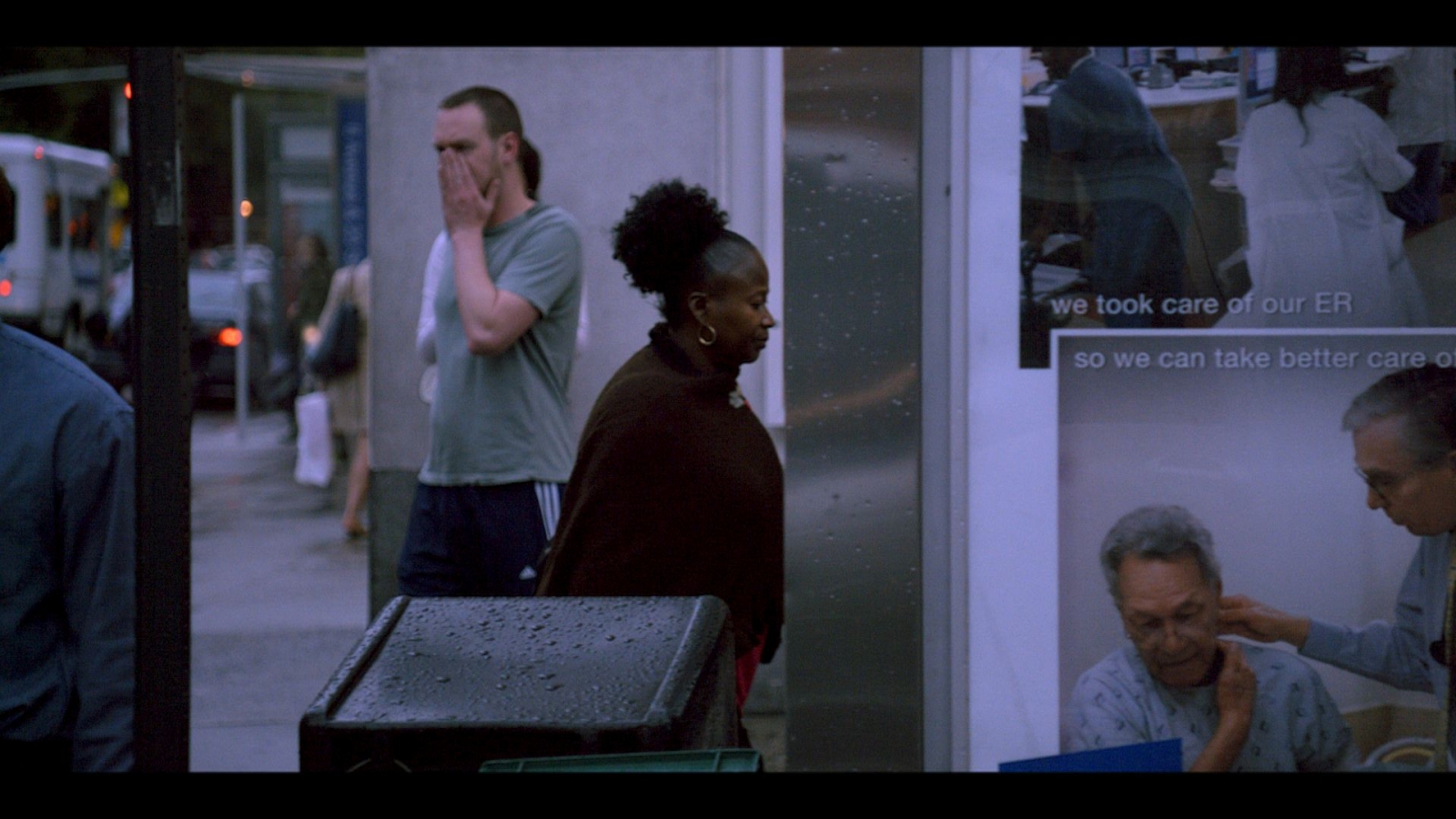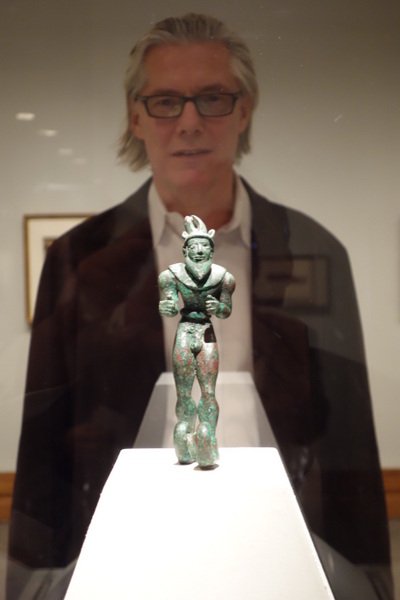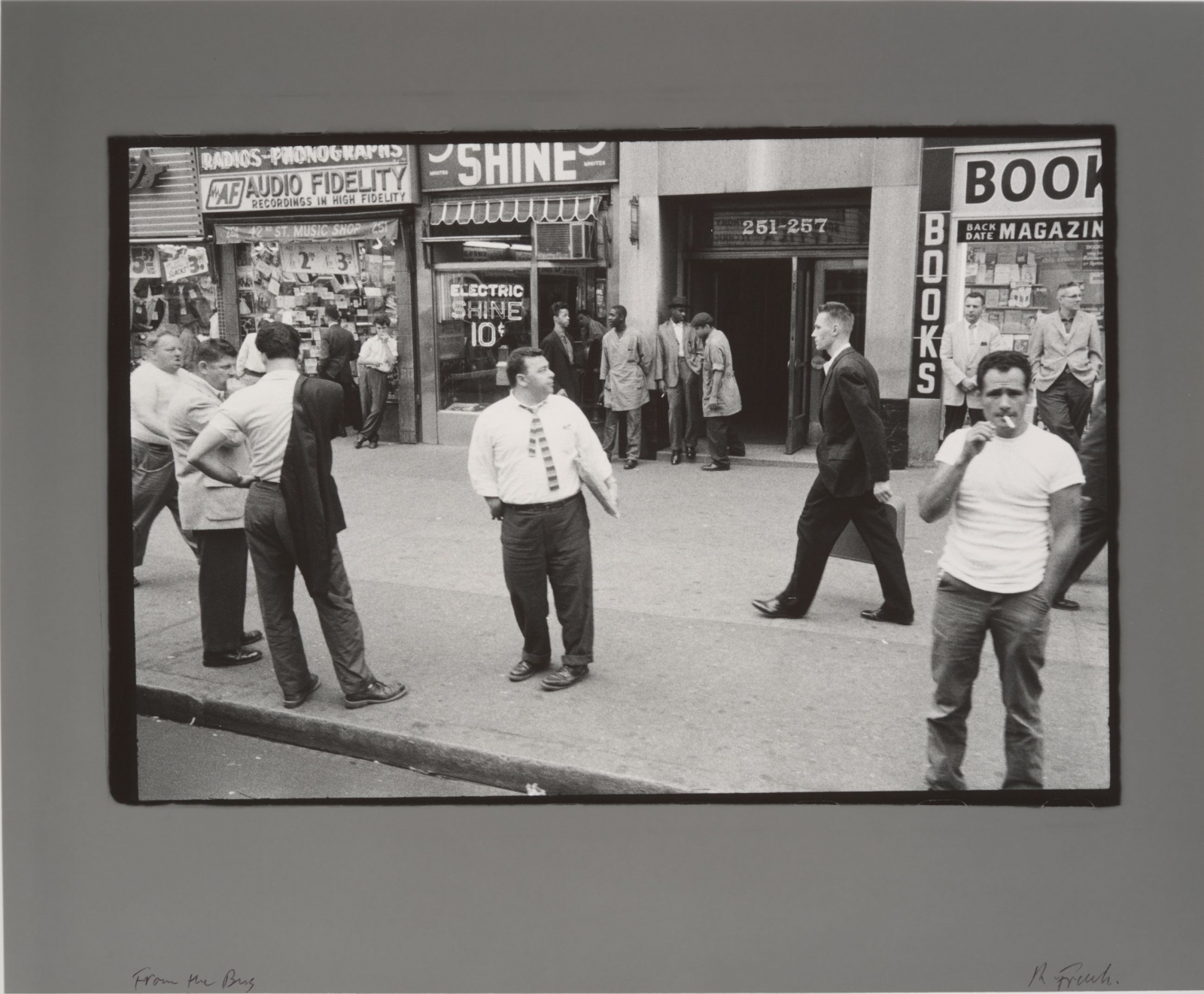
Art Week in NY – Street at the Met – The Slower the Better
Just turn a camera on a New York street, and you’re likely to get drama or characters, maybe even beauty. Or maybe a fight, maybe a murder.
In Street, James Nares mounted a camera on an SUV, and he filmed the street as the vehicle drove through New York. Then he slowed some three minutes down to a length of 61 minutes and set it to the seemingly random improvisations on the 12-string guitar by Thurston Moore of Sonic Youth. The silent video, now on view on a huge screen in the Prints and Photographs Galleries at the Metropolitan Museum of Art, has a balletic elegance in much of what the camera sees, thanks to Nares’s decision to distill it to a deliberate consistent crawl.

Street – Is the Influence R. Crumb or Walker Evans ?
Instant harmony? This is a radically different kind of drive-by shooting in a city that was once famed for just that. There is a remarkable grace in unrehearsed movements – anything but the kind of mugging for snapshots that you see all over Facebook. Street is a continuous frieze — all the more continuous because the video is presented, gallery-style, on what amounts to being a tape-loop (note the anachronistic reference to tape) — challenging you to look more carefully than otherwise at the urban fabric that you take for granted in glimpses at city sidewalk speed. It’s been a long time since people began talking about the distortion of time and perception that came from the rapid-fire editing of moving pictures that was often attributed to music videos made for MTV, which fed into what was assumed to be the short attention span of adolescents. Whatever that disparaging snark means now, in today’s age of data overload that makes old MTV look like a Commodore computer, Nares’s procession is something at the other extreme, and all the more welcome for it. This isn’t Taxi Driver, as much as I love the hypnotic driving sequences in that anthem to New York and the scenes that move horizontally along the sidewalks. I can’t wait for the blogger who calls Street the art world’s version of slow food.

This Video Has Deep Artistic Roots — James Nares Stands Behind the ancient Mesopotamian figure, Walking Man, One of some 70 Works Selected by Nares from the Met’s Collection That Depict Figures in Motion or Public Scenes (courtesy Paul Kasmin Gallery)
Is this all that new conceptually? Artists deployed technology (or ignored it) to observe what’s around them before media became a word that even anchormen knew. Ordinary people – or people whom you meet at random – are an inexhaustible subject. Impressionists who were exhorted to paint “modern life” took to the streets and the parks to depict citizens at leisure, who dressed in order to be seen. As soon as cameras made moving pictures, those cameras toured through streets and crowds. Street photography defined our notion of France and many other places in the 20th century.
And the people whom we observe? Some change their behavior when they see the camera – as we see in Nares’s video. Some don’t. Music accompanying the silent footage adds to the feel of random choreography, and helps viewers decide how they should feel. The guitar score to Street couldn’t be farther from street sound in its dirge – the images makes the mournful chords on the open-tuned 12-string seem more like a celebration — albeit one by John Fahey.

Robert Frank – An Inspiration? On View with Street at the Met
As Nares’s camera looks out, moving past the walkers on the street, you become aware of a layering effect that gives the film the feel of a 3-D projection. Keep looking, and that three-dimensional effect can seem like the movement of fish at various distances from you in a fish-tank. Is it a special effect? At least it’s special to Nares’s work. The general effect is that the street, and the people on it, look more elegant than you remember when you rushed past them, or they rushed past you. But isn’t that what artists have tried to do – to bring pleasure and beauty to what they observe, even if it idealizes (or betrays) the original materials by elevating them above their gritty cacophony?
